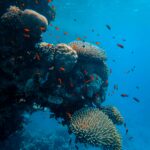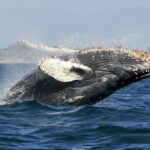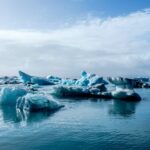
Plant a Coral. Did you know that you can adopt a coral and support its research?
Created by the University of the Algarve’s Marine Sciences Center, the Plant a Coral project aims to rescue specimens accidentally caught in fishing nets and
We didn't find any happenings mapped to your criteria.
Try the traditional search to find articles not yet mapped with RUA.
We didn't find any happenings mapped to your criteria.
Try the traditional search to find articles not yet mapped with RUA.
We didn't find any happenings mapped to your criteria.
Try the traditional search to find articles not yet mapped with RUA.
We didn't find any happenings mapped to your criteria.
Try the traditional search to find articles not yet mapped with RUA.
A new study focused on nine simulations in the Arctic Ocean, which point to the first ice-free day within three to six years.
In recent years, researchers have estimated the loss of ice in the Arctic Ocean around 2030, but a new study has revealed that the first ice-free day could occur as early as late summer 2027.
The first ice-free day in the Arctic is defined by scientists as the first time that the area of sea ice shrinks to less than one million square kilometers in a short space of time.
While most projections of Arctic sea ice focus on monthly average values, this study, published in the journal Nature Communicationspresents, for the first time, multi-model projections that indicate when we could see the first ice-free day based on equivalent conditions in 2023.
“The first time the Arctic reaches ice-free conditions will be an event with high symbolic significance, as it will visually demonstrate the ability of humans to alter one of the defining features of the Arctic Ocean through anthropogenic greenhouse gas emissions – the transition from a white Arctic Ocean to a blue Arctic Ocean,” warns the team of international researchers, who used more than 300 computer models for the forecasts.
Although the highest probability of the first ice-free day occurring is between seven and 20 years, the study focused on the nine simulations in which the transition is fastest, within three to six years.
“By focusing on these rapid transition simulations, we are not suggesting that ice-free conditions will be reached so quickly. Instead, the aim is to raise awareness of the potential for a rapid loss of sea ice in the near future and to provide information on what could lead to these rare but high-impact events,” the researchers explain.
The authors of the study found that most of the first ice-free days occurred in August, the first ice-free period lasted between 11 and 53 days, and all the projected first ice-free days “occur during a rapid ice loss event and are associated with a strong warming in the previous winter and spring”, which leads to a loss of sea ice mass throughout the year.
“The transition to an Arctic Ocean with a sea ice area of less than one million square kilometers (normally used as an ice-free threshold) in summer has cascading effects on the rest of the climate system: it would noticeably increase the warming of the upper ocean, accelerating the loss of sea ice throughout the year and therefore further accelerating climate change, and it could also induce more extreme phenomena at mid-latitudes,” reads the study.
In the long term, “a further reduction in summer sea ice cover will also have a negative impact on the already struggling Arctic ecosystem, from the emblematic polar bear to the crucial zooplankton.”
Researchers have frequently found heatwaves/blocks and/or warm air intrusions and storms crossing the Arctic in the days leading up to the first ice-free day, events that could increase in frequency as the Arctic warms, making the first ice-free day increasingly likely.
“The first ice-free day in the Arctic won’t change things drastically. But it will show that we have fundamentally altered one of the defining characteristics of the Arctic Ocean’s natural environment, which is that it is covered in sea ice and snow all year round due to greenhouse gas emissions,” said climatologist Alexandra Jahn, one of the authors of the study, in a statement.
“Although the first ice-free day has a high symbolic significance, it does not mean that the Arctic Ocean will be ice-free every year thereafter,” the scientists explain.
“For all cases of rapid transition, the first ice-free day occurs in years when global warming is equal to or greater than 1.5 °C above pre-industrial level, which is the not-to-exceed target set by the Paris Agreement (…). This means that if we managed to keep warming below the Paris Agreement target, ice-free days could still potentially be avoided,” they conclude.


Created by the University of the Algarve’s Marine Sciences Center, the Plant a Coral project aims to rescue specimens accidentally caught in fishing nets and

The sanctuary will conserve the resident population of more than 200 sperm whales living near the Caribbean island of Dominica and sequester carbon off the

The study reveals that from all the trash found in the Arctic over five years, 80% was plastics, much of it coming from fishing activity.

This article addresses an action that promotes the adoption of urgent measures to fight climate change and its impacts. SDG 13 also aims to improve education on climate change mitigation and impact reduction.
 To discover businesses that are actively working to contribute to this Sustainable Development Goal, click here.
To discover businesses that are actively working to contribute to this Sustainable Development Goal, click here. To read news, interviews or tips related to this Goal, click here.
To read news, interviews or tips related to this Goal, click here.Esta publicação também está disponível em:
![]() Português (Portuguese (Portugal))
Português (Portuguese (Portugal))

